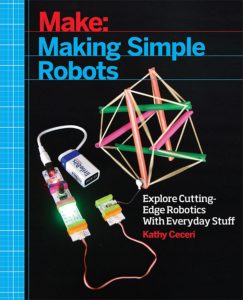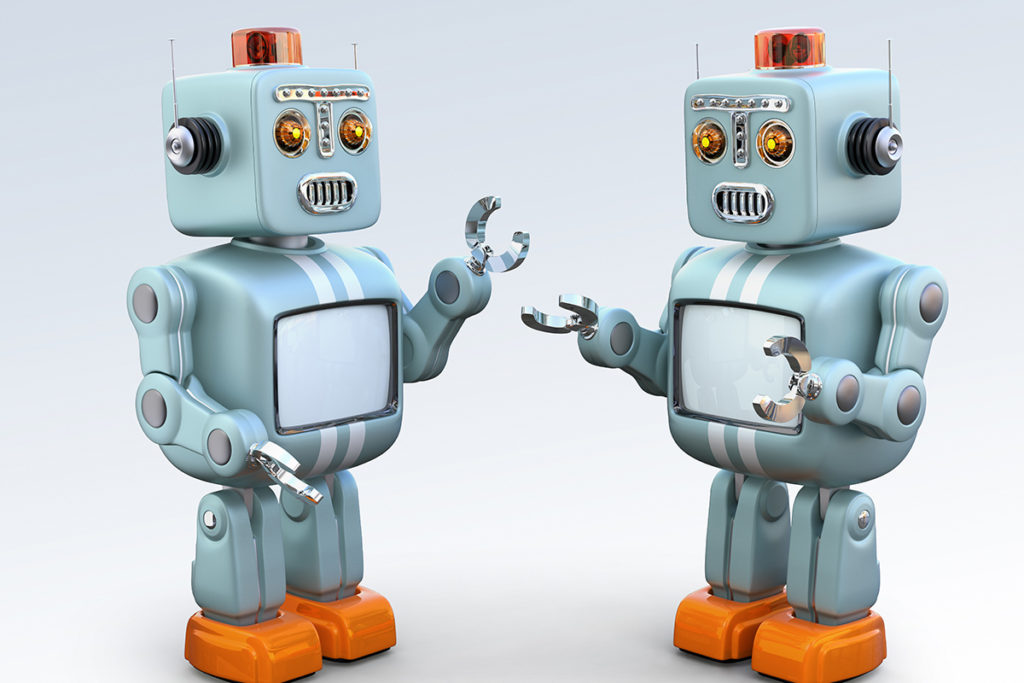 |
Clive Gifford’s Robots (Atheneum Books, 2008) is an informative non-fiction account of the many different types of robots and their abilities. Learn about underwater robots, humanoid robots, medical robots, space robots, and spy robots. (An earlier version of the book cover was much friendlier, with a cute robotic giraffe.) For ages 5-9. |
 |
Helaine Becker’s Zoobots (Kids Can Press, 2014) is a fascinating account of robots based on wild animals, with illustrations of the actual animal and its paired zoobot, and explanations of the zoobot’s structure and function. For example, learn about robots based on pygmy shrews, snakes, and jellyfish. For ages 7-10. |
|
Learn more about zoobots 5 Robots That Look, Act, and Are Designed Like Animals. (Robot sea turtles, hummingbirds, squirrels, fish, flies, and more.) |
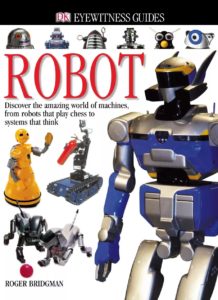 |
Roger Bridgman’s Robot (Dorling Kindersley, 2004) in the Eyewitness series features a different robotic topic on each double-page spread, among these Fictional Robots, Robot Ancestors, Artificial Intelligence, Robots in Industry, Animatronics, and Cyborgs. Illustrated with wonderful color photographs. For age 8-12. |
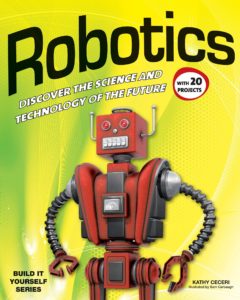 |
Kathy Ceceri’s 128-page Robotics (Nomad Press, 2012) is a terrific introduction to the science and technology of robots. Included are a reader-friendly text, Fun Facts boxes, lists of words to know, and 20 great projects, among them a Wobblebot, a Passive Dynamic Mini Walker, and a Robotic Arm. For ages 8-12. |
 |
By Gaby Wood, Edison’s Eve (Anchor, 2003) – subtitled “A Magical History of the Quest for Mechanical Life” – is a reader-friendly history of robotics. The Eve of the title refers to Thomas Edison’s attempt to capture the American toy market with a talking doll. (He failed; the doll was creepy.) A thoroughly interesting read for teenagers and adults. |
|
How creepy was Edison’s talking doll? Listen to it here. |
 |
Tom Standage’s The Turk (Berkley Trade, 2003) is the story of Wolfgang von Kempelen’s marvelous chess-playing automaton – a robotic creation that thrilled the world and inspired both the computer and the modern detective story. For teenagers and adults. (Also see Gary Blackwood’s The Curiosity, above.) |
|
From The Atlantic magazine, The Robot Will See You Now is a 2013 article by Jonathan Cohn on medical robots. |
|
From How Stuff Works, How Robots Work is an illustrated multi-page explanation. |
|
Carnegie Mellon’s Robot Hall of Fame has pictures and information about each year’s “best” robots. |
|
From the History Channel, check out 7 Early Robots and Automatons. |
|
From the RobotShop, History of Robotics is an annotated timeline of the history of robotics beginning with the ancient Greeks. |
|
A Brief History of Robots runs from Karel Capek’s R.U.R. (1921) through DARPA’s Pet-Proto and Legged Squad Support System (said to look like a warthog). Video clips accompany each entry. |
|
From Forbes magazine, 30 Great Moments in the History of Robots runs from the Babylonian clepsydra to the driverless car. Hyperlinked and illustrated. |
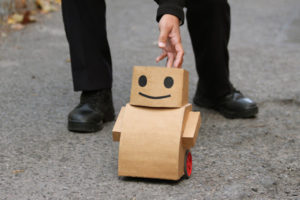 |
Kacie Kinzer’s Tweenbots are possibly the world’s most adorable robots. People help them cross the street. |









